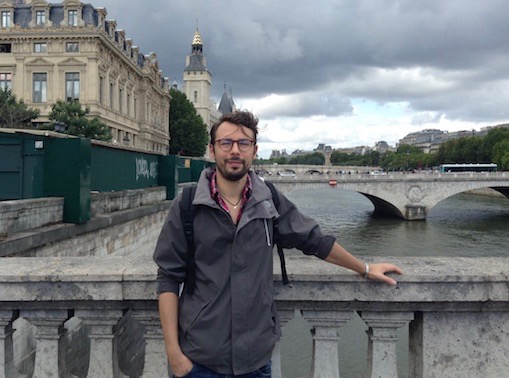The Hatter is one of the main characters in “The Adventures of Alice in Wonderland”, by Lewis Carroll (1865). His reputation seems to come from the Victorian expression “mad as a hatter”, which was based on an actual problem. In fact, the mercury that was used in felt-making was highly toxic for the nervous system and could lead hatters to displays of neurotic behaviour.
But what is the relationship between the representation of psychological deviance in fairy tales and in 19th-century medical discourse? To what extent do these representations reflect, influence or question each other?
The relationship between psychiatric literature and fairy tales in the 19th century is the foundation of the interdisciplinary, transnational study of Alessandro Cabiati, who is the winner of one of the 30 Marie Curie Fellowships obtained by Ca’ Foscari. Dr. Cabiati’s research project, MADLAND: Madness in Fairy Land. (Re)Imagining Deviance in the Age of Psychiatry 1820-1900, will be conducted at Ca’ Foscari under the supervision of Professor Laura Tosi, and at Brown University (USA).
In addition to “Alice's Adventures in Wonderland”, Dr. Cabiati will analyse dozens of literary works from England, France and North America, penned by authors such as Carroll, Balzac, Poe, Wilde, Dickens, Rachilde, Baudelaire, and others.
Alessandro Cabiati holds a BA in Foreign Languages and Literatures from Università degli Studi di Milano, an MA in French, Italian and English from the University of Oxford, a PhD in Comparative Literature from the University of Edinburgh, and a postdoctoral research position at King’s College London. In 2019, Dr. Cabiati began to design a research project on monomania (“fixed idea”) and on the literary reinterpretation of monomania in 19th-century Britain, France and the United States. This analysis has resulted in the project that has won Cabiati a prestigious Marie Curie Fellowship, on which he will work until 2024 in Providence and Venice.
“Fairy tales and fantasy have always fascinated me,” he tells us in an online interview from London, where he is currently living. “This project is also partly related to my doctoral thesis (which will soon be published), which is about the influence of Baudelaire on the Italian Scapigliatura and which I have expanded to include Futurism. An interesting fact is that the Italian Scapigliatura, Baudelaire and Futurism used medical vocabulary to represent mutilated and decomposed bodies in poetry, as in anatomical pathology.
In fact, the development of psychiatry, in the mid-19th century, certainly influenced contemporary poetry, especially in the use of anaphora and refrains, as can be observed in Arrigo Boito’s poetry. For example, Boito’s experimental poem “Re Orso” (1864), captioned “Fiaba” (fairy tale), uses the medical/psychiatric understanding of monomania as a base over which he paints a layer of wonder. It is a fairy tale more for adults than for children. The refrain is used by Boito to play with these two layers, the medical one and the fairy tale, to create a mysterious atmosphere.”
Your research focuses on the dialogue between literature and psychiatry. Which aspects are you planning to explore?
“I will first carry out a translational, translinguistic study of the ways in which 19th-century fairy tales incorporate, represent and even question the medical representation of mental disorders. I want to “map” the development of medical deviance in psychiatry in the 19th century by documenting the evolution of the classification of abnormal characteristics in “psychiatric” essays and articles.
Then I will study approximately twenty fairy tales (and possibly others) compared with the results of the mapping process. Some of these texts are older fairy tales, belonging to European and non-European cultures, that were translated into French and English and published in the 19th century. In addition to analysing fairy tales, I will consider various types of fairy-tale narratives: short stories, poems, adult novels with fairy-tale plots or characters (such as fairies). I will also consider fantasy literature for children, both with realistic and fantastic settings.
I will also analyse the medical use of fairy-tale imagery, rhetoric, and language of monstrosity. In fact, in 19th-century medical literature it wasn’t unusual for psychiatric patients to be described as if they were “monstrous” fairy-tale characters, such as dangerous and violent ogres and witches.
It was Michel Foucault, in his “Abnormal” lectures, who stated that at the start of the 19th cenutry, when psychiatry began to develop, the representation of a “sexually degenerate” person changed from being that of an “unnatural monster” to that of being a “mentally deranged person”. Therefore, if at the start of the 19th century, psychiatry described mental illness as something monstruos, by the end of the same century the same person would be described in terms of sexual deviance. I should clarify that Foucault was using a metaphor – my study aims to discover whether Foucault’s metaphor actually happened, whether psychiatry actually used fairy-tale rhetoric to describe patients.”
Can you give us a preview of the texts you are going to analyse?
I will focus on 5 thematic areas that concern psychological deviance and its fairy-tale representation. One of these areas is the discourse on mental sanity and madness, reality and imagination, normativity and deviance, which was explored in La Fée aux miettes by Charles Nodier (1832) and in Les Fées de France, by Alphonse Daudet (1873). The latter story is set in Paris in 1870, in the years following the Commune. We are in a tribunal where a woman, Mélusine, is on trial. She is accused of being a radical pyromaniac who has collaborated with the insurrectional government of the Commune. Mélusine says she is actually a fairy and she wanted to set Paris on fire because modern science and technology have caused fairies to disappear. Mélusine is the last fairy left. In the end, as everyone laughs at her, she is judged to be insane and she is sent to an asylum.
I will also study the representation of situations that psychiatry then considered as sexual perversion and deviance, analysing how non-normative gender and sexuality were represented in 19th century fairy-tale narratives, such as bisexuality or “magical transexuality”. In fact there are fairy tales and stories that describe bisexuality. One example is Isoline-Isolin, by Catulle Mendès (1885): in this tale, princess Isoline is the victim of a curse cast by an evil fairy, who condemns the princess to transform into a man during her wedding night. When Isoline gets married, however, a good fairy casts a similar spell on the groom, so that he will transform into a woman. The unconventional aspect of this tale, considering when it was written, is that Isoline, who was magically transformed into a man, decides not only to accept, but also to embrace his new sex and new gender identity, and openly declares it to his parents.
Another theme regards mental conditions related to gender and age, such as female anorexia and child autism. One example of this topic is Wooden Tony, by Lucy Lane Clifford (1882) – a tale which can be considered “Pinocchio’s opposite”. Tony is a child who cannot interact with the world, to the extent that he is dubbed “WoodenTony”. In the end, he transforms into a wooden figurine. As Charlotte Moore states in her article in The Guardian, it is possible that “Wooden Tony” describes autistic traits. In fact, even though autism was not classified as a medical condition until the mid-20th century, autistic traits were already being described in 19th-century medical literature.”
Tell us a bit more about Alice’s Hatter: is he a representation of madness?
“Academics have already studied how Carroll used Victorian psychiatry to represent the Hatter. In fact, if we examine the description of the Hatter in the seventh chapter of the novel, we notice there are similarities with the description of mentally ill patients in the medical literature of the time. In his novel, Carroll seems to use the Hatter to discuss the abnormality of madness in a fairy-tale world in which abnormality is the norm. However, he does this while keeping one foot in the real world, using dream visions as a narrative device. This is the aspect that most interests me and that I can analyse in my research. I would also like to explore the way in which the image of the Hatter was used in the medical literature of the time, literally or metaphorically, to talk about mental illnesses.”











